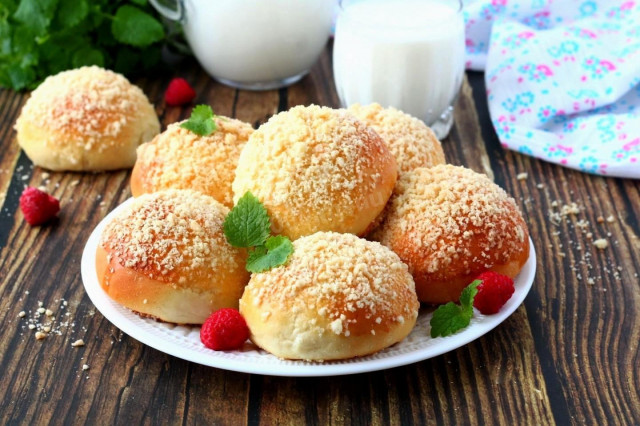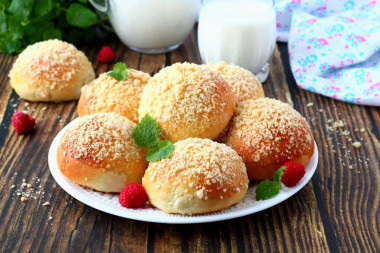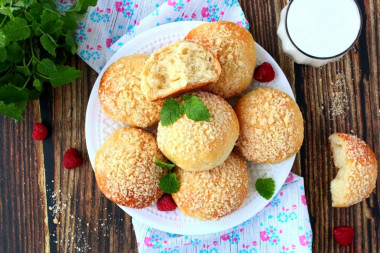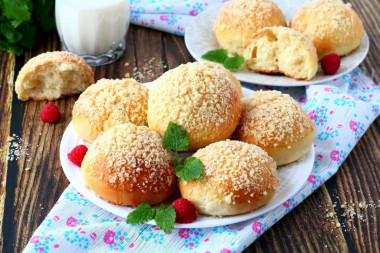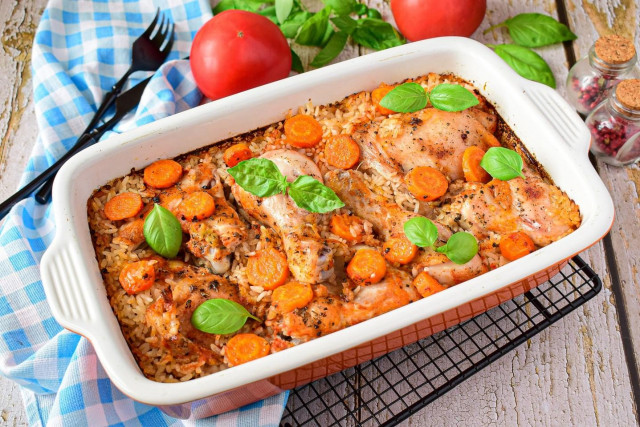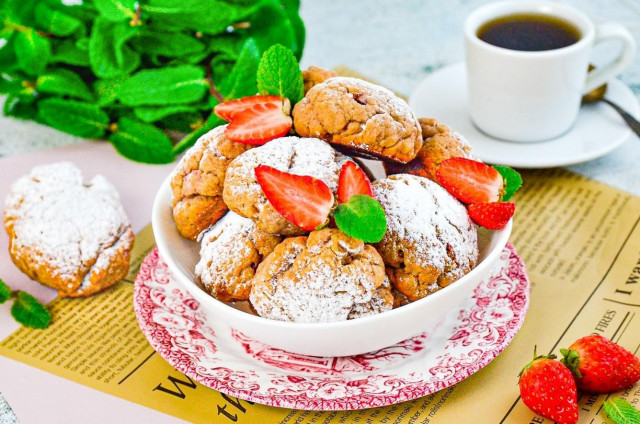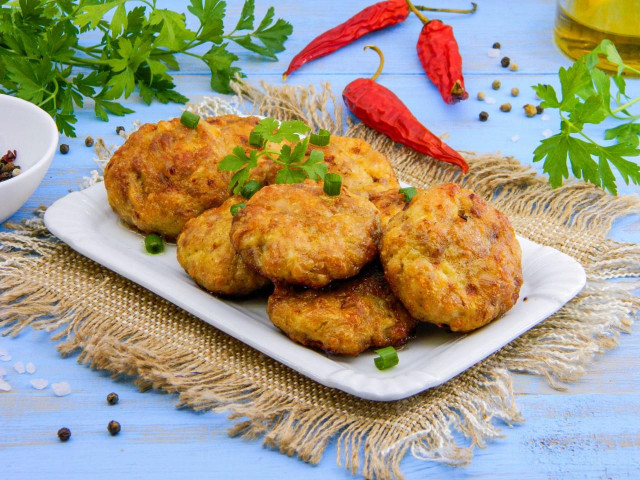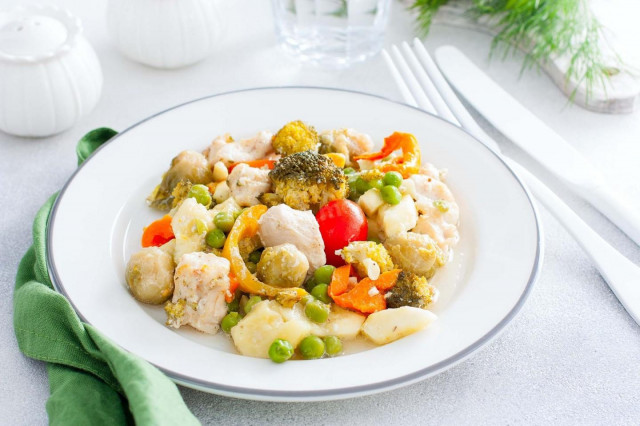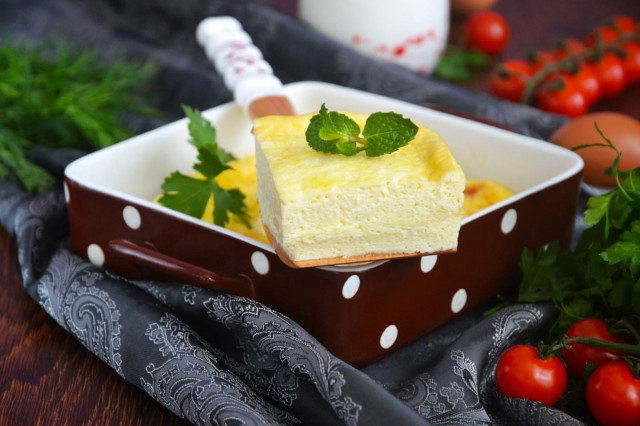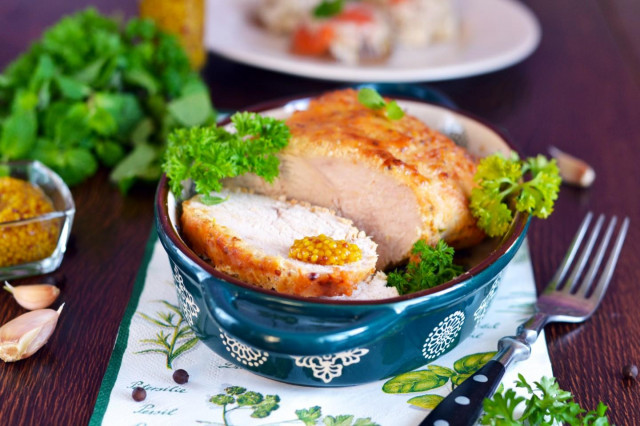Composition / ingredients
Step-by-step cooking
Step 1:
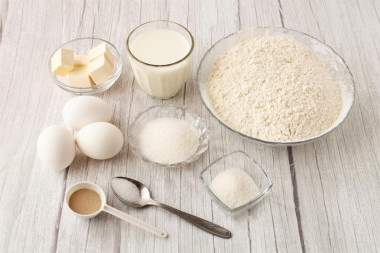
How to bake muffins with milk? Measure out the necessary products. Milk is suitable for any fat content. It only needs to be warmed up slightly. Take wheat flour of the highest grade. Vanilla sugar can be replaced with vanillin.
Step 2:
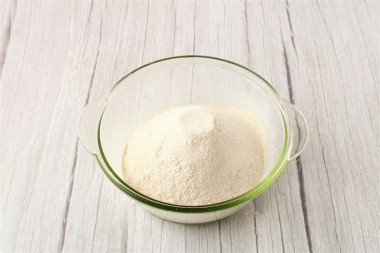
Sift flour into a suitable sized bowl. This must be done so that the flour is enriched with oxygen. This will make the dough more airy, lush and easy to lift.
Step 3:
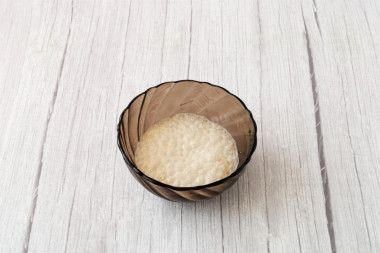
Activate the yeast first. This will also allow you to check their quality. In a small bowl, combine yeast, 1 tsp sugar and about half of lukewarm milk. Stir and leave the mass for 10-15 minutes. A foam cap should appear on the surface. If this did not happen or the yeast rose weakly, then they are of poor quality and it is better to replace them. On such yeast, the dough will not be successful.
Step 4:
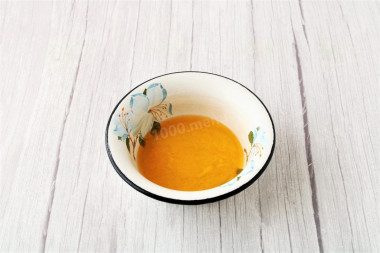
Melt butter over low heat, let cool slightly.
Step 5:
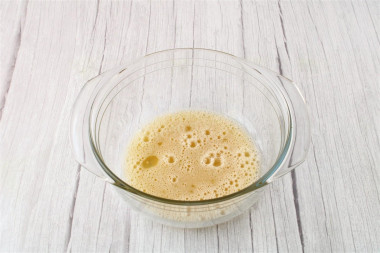
For kneading the dough, choose a spacious, wide, stable dish so that it is convenient to do the kneading. Whisk eggs with sugar, salt and vanilla sugar until smooth.
Step 6:
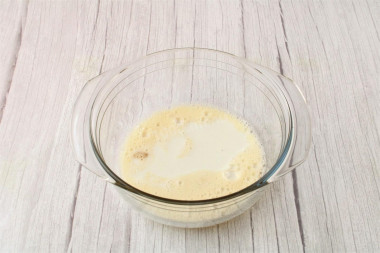
Pour in the remaining milk, mix.
Step 7:
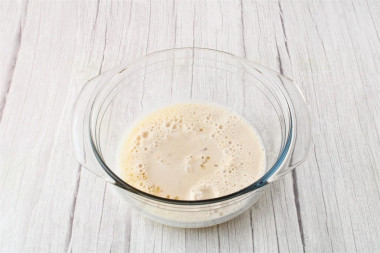
Add the yeast mixture that has come up, mix well.
Step 8:
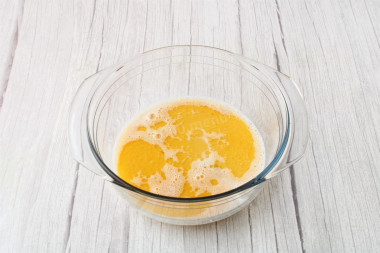
Pour in the butter, mix until smooth.
Step 9:
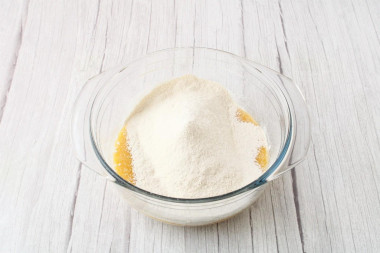
Pour in about 3/4 of the sifted flour, you can do it through a sieve. Repeated sifting will not be superfluous. Do not add all the flour at once, it may require more or less of the specified amount. It depends on the quality and properties of the flour used.
Step 10:
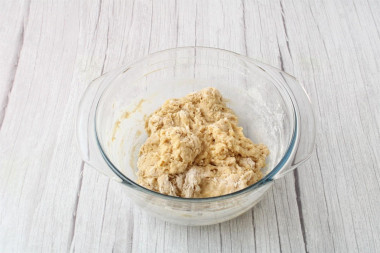
Mix the dough first with a spoon. It is still quite sticky and viscous.
Step 11:
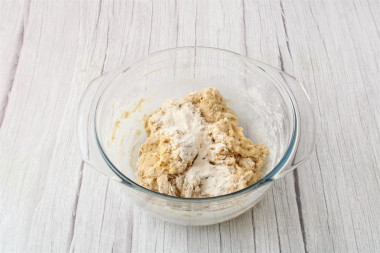
Pour the remaining flour in small portions, while stirring the mass with your hands. At the same time, control the consistency of the dough. Do not add too much flour so that the dough does not turn out tight and heavy.
Step 12:
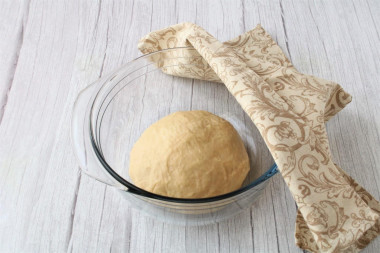
The dough should turn out soft, pliable. It can stick to your hands quite a bit. Form a ball from the dough, cover the top with a towel or cling film. Leave the dough in a warm place to ripen.
Step 13:
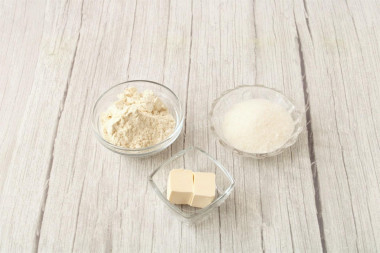
While the dough is coming, prepare the streusel. The butter should be cold, but not frozen.
Step 14:
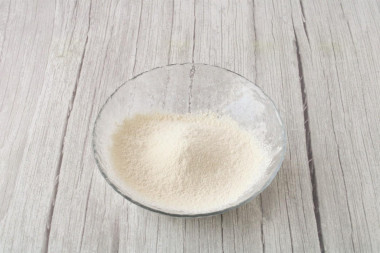
Sift flour into a bowl.
Step 15:
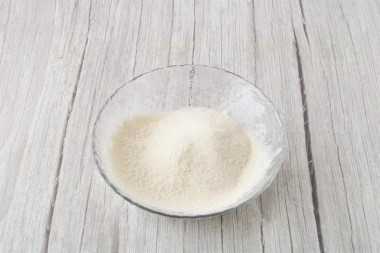
Add sugar to the flour, mix.
Step 16:
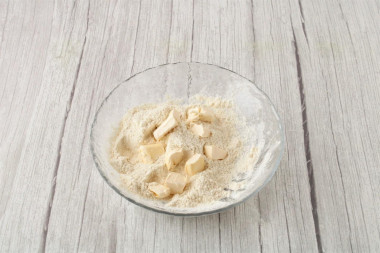
Add cold butter to the flour mixture.
Step 17:
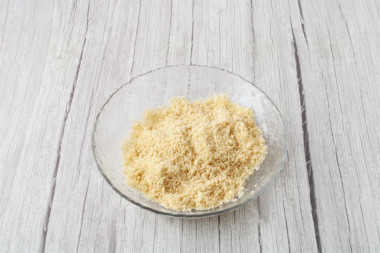
Rub everything with your hands until you get crumbly butter crumbs. If the crumbs are not crumbly enough, add a little flour. Cover the finished streusel and put it in the refrigerator so that the butter does not melt.
Step 18:
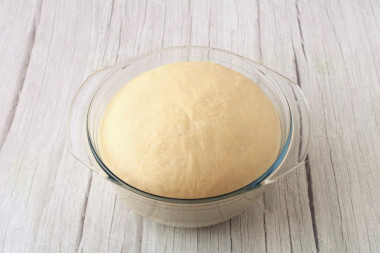
The dough has risen, increasing in volume by about 2.5 times. This usually happens in 1 hour-1 hour 30 minutes. The rise time depends on the ambient temperature and yeast activity.
Step 19:
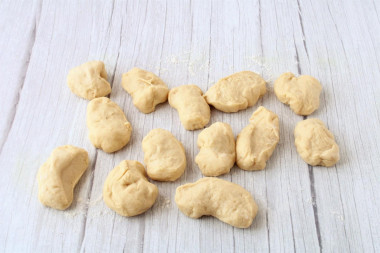
Knead the dough gently, put it on the table, sprinkled with flour. Divide the dough into identical pieces depending on the desired size of the buns.
Step 20:
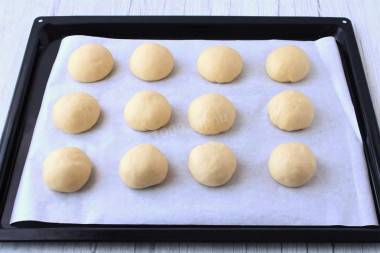
Roll a bun out of each piece of dough. Place the formed buns on a parchment-lined baking sheet. You can make buns with any sweet filling: jam, thick jam, raisins.
Step 21:
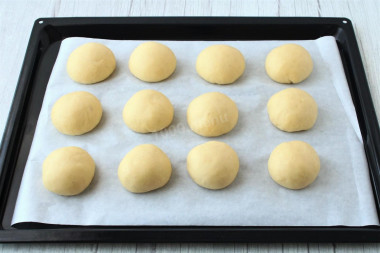
Cover the buns with cling film or a light towel and leave for proofing for 15 minutes.
Step 22:
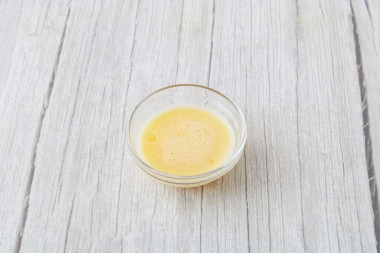
Beat the egg with a fork until smooth.
Step 23:
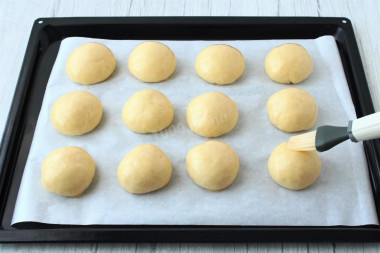
Grease the surface of the buns with beaten egg.
Step 24:
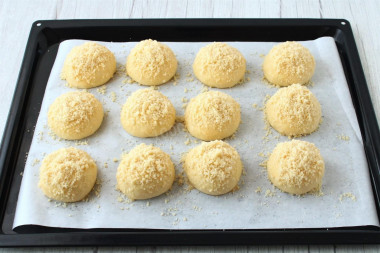
Sprinkle the buns generously with streusel on top.
Step 25:
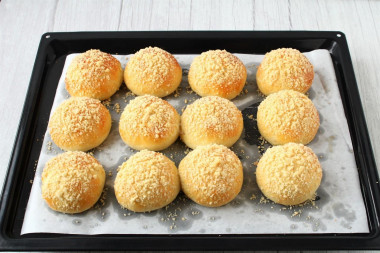
Bake the muffin in a preheated 180C oven for about 25 minutes until golden brown. The cooking time will depend on the specifics of the oven, so adjust the baking mode and duration based on this.
Step 26:
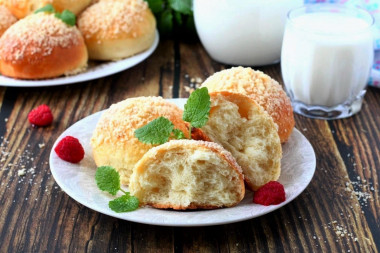
Bon appetit!
Keep in mind that everyone's ovens are different. The temperature and cooking time may differ from those specified in the recipe. To make any baked dish successful, use useful information about the features of ovens !
In order for the oven to have time to heat up to the desired temperature, turn it on in advance (10-20 minutes before the start of cooking).
Important! Using dry yeast, it should be borne in mind that they occur in two forms: active and instant (read the instructions carefully before use!).
Active dry yeast looks like beads or small balls. Before applying them, they must be brought out of "sleep mode". To do this, the active yeast is diluted in warm sweet water, milk or whey. The resulting bubbles, foam or "cap" indicate that the yeast is ready for further use. Active dry yeast must be brought to complete dissolution in the liquid, otherwise, due to the remaining grains, the dough may not rise and the baking will be spoiled (yeast grains that have not dissolved in the liquid and got into the dough will not disperse on their own, which means they will not work).
Instant dry yeast is easier to use. They do not need to be activated before use. Such yeast, along with other ingredients, is simply added to the dough. As a result, the baking time is reduced.
It should also be remembered that both types of dry yeast may differ in their activity from different manufacturers.
Caloric content of the products possible in the composition of the dish
- Whole cow's milk - 68 kcal/100g
- Milk 3.5% fat content - 64 kcal/100g
- Milk 3.2% fat content - 60 kcal/100g
- Milk 1.5% fat content - 47 kcal/100g
- Concentrated milk 7.5% fat content - 140 kcal/100g
- Milk 2.5% fat content - 54 kcal/100g
- Chicken egg - 157 kcal/100g
- Egg white - 45 kcal/100g
- Egg powder - 542 kcal/100g
- Egg yolk - 352 kcal/100g
- Ostrich egg - 118 kcal/100g
- Granulated sugar - 398 kcal/100g
- Sugar - 398 kcal/100g
- Butter 82% - 734 kcal/100g
- Amateur unsalted butter - 709 kcal/100g
- Unsalted peasant butter - 661 kcal/100g
- Peasant salted butter - 652 kcal/100g
- Melted butter - 869 kcal/100g
- Salt - 0 kcal/100g
- Wheat flour - 325 kcal/100g
- Vanilla sugar - 379 kcal/100g
- Dry yeast - 410 kcal/100g

